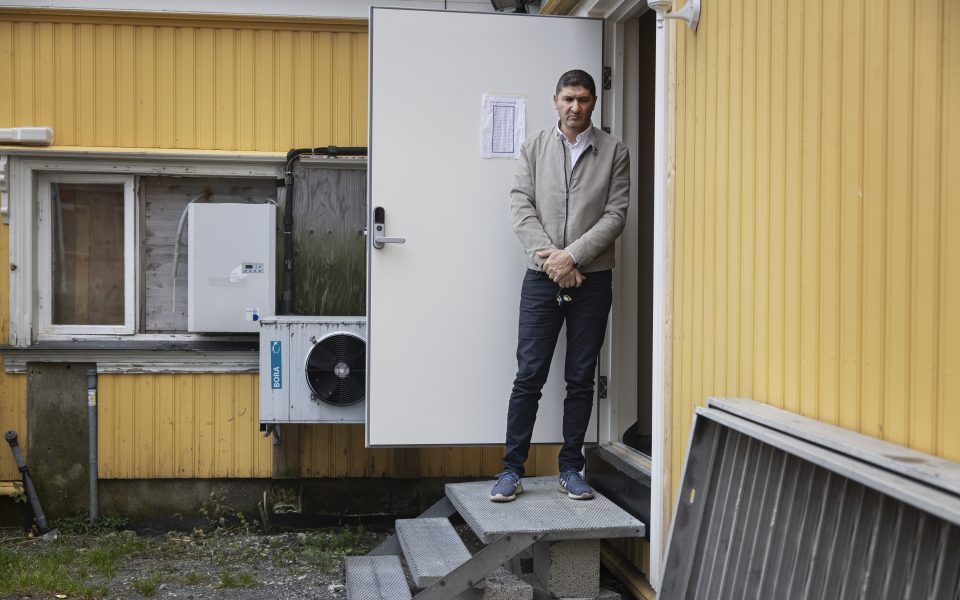Town rattled by bow-and-arrow killings ponders terrorism and mental illness

KONGSBERG, Norway – A few years ago, a nervous Danish man walked into a mosque in this placid Scandinavian town, seeking help in delivering a message to the world that he claimed to have received “from above.”
The mosque’s spokesperson sent him away. But he recalled the odd episode last week after the man, Espen Andersen Brathen, confessed to killing five people Wednesday with weapons including a bow and arrow, leaving many in Kongsberg wondering how his life had gone so terribly off course.
“I told him we are not a news agency,” Oussama Tlili, who heads the only mosque in Kongsberg, said of that encounter about five years ago. “You could see the tension in his face and his body, it made me uncomfortable, and I remember thinking, ‘This man is a risk.’”
Police said initially that they believed Brathen, 37, may have been motivated by Islamic extremism and that he had committed acts of terrorism. Authorities pointed to the randomness of the targets and Brathen’s conversion to Islam.
But evidence uncovered since seems to undermine that conclusion. Tlili says that his first impression of Brathen, at the time a recent convert to Islam, suggested less a man motivated by religious fervor than one with deep personal troubles.
“While it still remains to be seen if this is about terror or psychiatry,” said Arne Christian Haugstoyl, the head of Norway’s counterterrorism unit at the Police Security Service, “all along the way we have seen his psychological problems, and that has been our main worry, not his ideology.”
In this ordinarily quiet town, remnants of the crime scene wove an eerie seam through the otherwise ordered streets of clapboard houses: a crack in the glass storefront of the Coop supermarket, where Brathen began his attack; red police tape that traced his path through the town; and bouquets of flowers piled in front of doors where he entered and killed.
Norwegians are not strangers to terrorism. In 2011, Anders Behring Breivik, a right-wing extremist who later changed his name to Fjotolf Hansen, killed 77 people, many of them children, when he went on a shooting rampage on an island near Oslo.
But in the bow-and-arrow killings, early headlines about a terrorist attack gave way to a different story: Police announced Friday in a news conference that Brathen had been transferred to a medical facility for a psychiatric evaluation. They also said interrogations of Brathen had been suspended until his mental state was determined.
“He is very tired, and he is not well, mentally,” said Per Thomas Omholt, a police inspector in Kongsberg.
Both the local police and Kongsberg’s district psychiatric care center are being investigated for possible lapses in their dealings with Brathen during his apparent emotional collapse.
Sunday was a day of remembrance for this small town, where many have been shaken by the murders.
Some laid flowers or lit candles at a makeshift memorial in the center of town. Paper hearts with messages studded the bridge leading across the river to the town’s only church, where a long line of people waited to attend a memorial service for the victims.
“My hometown, it is shaking,” said Borghild Glosimot, 52, who was born and raised here. “It’s a shame that this is what brings it into the limelight.”
Members of the Norwegian royal family attended the service, as did members of the local mosque.
Kari Elizabeth Hoff, 82, a Kongsberg resident, was eating dinner Wednesday when she heard an unnerving scream. Soon after, a friend from the floor below started banging on Hoff’s door, saying her neighbors had been killed.
“I knew then that we were suddenly in the middle of a war here,” Hoff said. “That could have been me, in my home, or in that shop.”
The day after the attack, stunned and uncertain, Hoff walked to the church. “I am not a religious person,” she said, fighting back tears. “but I needed to just sit in a corner somewhere and say, ‘Thank you for my life.’”
Brathen, the son of a Norwegian father and Danish mother, has lived in Kongsberg most of his life and attended junior high school here. Interviews with friends and acquaintances paint a picture of a soft-spoken, amicable young man who took a sudden disturbing turn.
“He was incredibly kind, not attention-seeking,” said a 30-year-old woman who met him around 2009 and used to see him often at parties. “He was never talking about politics or religion,” she said. He was more interested in skateboarding, hip-hop and smoking hash, she said. The woman spoke on condition of anonymity because her family is close to one of the victims and feared that discussing Brathen would disrupt their lives.
But in recent years, when she would run into him he always looked unsettled, she said: His eyes were evasive, and his sentences would trail off. The last she saw him was the Saturday before the attack, as she walked home from a grocery store. He was in front of her when he suddenly started acting paranoid, checking franticly over his shoulder.
“It was so obvious to anyone who saw him on the street, even those who didn’t know, that he needed help,” she said.
Brathen first appeared in police reports in 2012 for petty crimes like drug possession and for breaking and entering into a local mining museum.
Not long after, Brathen converted to Islam and soon found his way to the mosque at Kongsberg’s Islamic Cultural Center, where he asked Tlili for help in delivering his divine messages.
“This guy, he didn’t know anything about Islam,” said Tlili, adding that he did not even know how to wash his hands properly before afternoon prayer.
In his 14 years of leading the mosque, Tlili said he had helped several native Norwegians convert. But he was suspicious of Brathen’s professed enthusiasm for Islam.
“He was not at all interested in speaking about religion,” he said. Tlili suspected that, even then, Brathen may have been ill. “Looking back, I believe it was a cry for help,” he said.
Over the next few weeks, Tlili said, Brathen returned two more times to request help delivering his “message.” And then he stopped. The next time Tlili saw him was last week, on national television.
Around the same time Brathen entered the mosque in 2015, Norway’s Police Security Service learned that he had converted to Islam and that he appeared to pose a threat, according to a spokesperson for the security service, Martin Berntsen.
In 2017, federal agents became alarmed after Brathen posted a video on YouTube in which he said he was a “messenger.” The next year they warned the district psychiatric center that Brathen’s mental state “lowered his threshold for violence,” Berntsen said.
According to local officials, Brathen underwent psychiatric examinations in 2010 and 2018.
The Kongsberg district psychiatric center, where Brathen was treated at least once, said in a statement that it was working to “turn every stone to get to the bottom of what has happened, what our role has been and whether there is anything we could have done better.”
Last year, a judge imposed a six-month restraining order on Brathen at his parents’ request after he refused to leave their house, threatened to kill his father and left a revolver on their sofa.
Silje Limstrand, 22, and Gudoon Hersi, 21, were roommates who lived across the street from Brathen until two weeks ago. They described him as a brooding, unstable presence who often kept to himself and whose behavior grew more disturbing over time.
“One day he would be making creepy comments about my hair or my dress and the next he would walk right by me with completely empty eyes,” said Limstrand, a kindergarten teacher.
Brathen spewed racist remarks at Hersi, who is Black. And, she recalled, “he had strange habits, like opening all the mailboxes on the road, or walking to and from the Coop three to four times in an hour.”
Hersi said that she had tried to alert her neighbors, but that her concerns went unheeded. Then she heard about last week’s attack.
“I knew immediately that it was him,” she said.
[This article originally appeared in The New York Times.]






